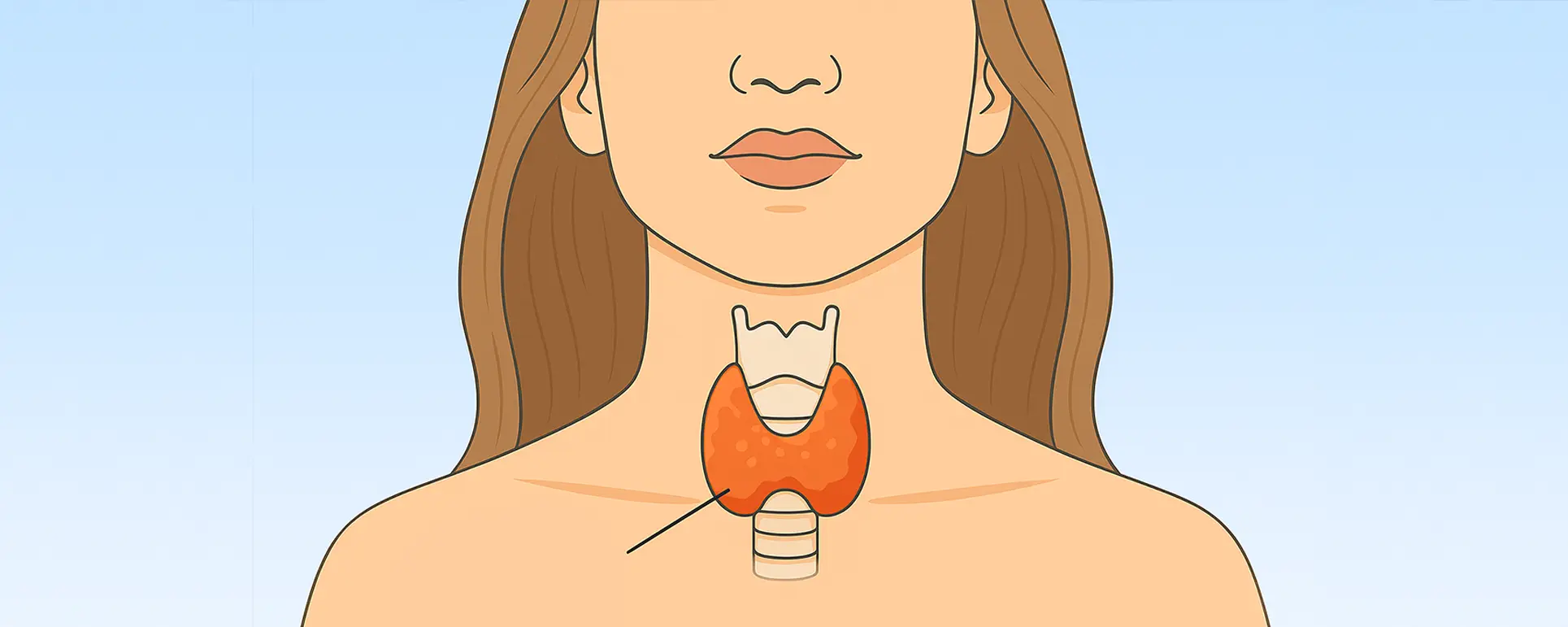If you’re living with an autoimmune thyroid condition such as Graves’ disease or Hashimoto’s thyroiditis, you’re probably used to monitoring how your thyroid hormones affect your metabolism, mood, and general wellbeing. But what you might not realise is that these conditions can also impact your eyes—particularly your lens health and how well you recover from cataract surgery. In this article, we’ll explore the subtle but important ways autoimmune thyroid disease can affect cataract development, progression, and postoperative healing.
Let’s break it down step by step.
Understanding Autoimmune Thyroid Disease and Its Systemic Effects
Autoimmune thyroid diseases occur when your immune system mistakenly attacks your own thyroid tissue. The two most common forms—Graves’ disease and Hashimoto’s thyroiditis—have very different clinical courses but can both wreak havoc far beyond the thyroid gland.
Graves’ disease often leads to hyperthyroidism (overproduction of thyroid hormones), while Hashimoto’s tends to result in hypothyroidism (underproduction). In either case, your entire body is impacted—your metabolism, cardiovascular function, skin, and yes, even your eyes.
In fact, the link between thyroid function and ocular health isn’t a new discovery. Graves’ orbitopathy (or thyroid eye disease) is a classic example of thyroid disease manifesting in the eye, with tell-tale signs like bulging eyes, dry eye, and periorbital swelling. But there’s now growing interest in how these systemic changes might quietly influence lens transparency and cataract risk—even before overt symptoms of eye disease are present.
How Thyroid Hormones Affect the Eye Lens
Your eye’s lens isn’t just a passive structure. It’s a living, protein-rich tissue that’s metabolically active and highly sensitive to oxidative stress. And here’s where thyroid hormones come in—they regulate a whole host of metabolic processes throughout the body, including the lens.
When your thyroid hormones are either too high or too low, the delicate balance in the eye’s microenvironment can be disrupted. High levels of thyroxine (T4) may accelerate oxidative processes, while low levels may impair cellular repair mechanisms. Over time, this imbalance may contribute to earlier lens protein denaturation and the onset of cataract formation.
Emerging research suggests that both hyperthyroid and hypothyroid patients may be at increased risk for cataract development, but potentially through different mechanisms. The metabolic overdrive in hyperthyroidism, for instance, may heighten oxidative stress, whereas hypothyroidism may reduce antioxidant defences and alter intraocular fluid composition. Neither condition is ideal when it comes to lens clarity.
Graves’ Orbitopathy: Unique Risks for Cataract Progression
Graves’ orbitopathy (also called thyroid eye disease or TED) deserves special attention here. It’s an autoimmune inflammatory condition that affects the muscles and tissues around the eyes. Patients often experience proptosis (eye bulging), lid retraction, and impaired ocular motility.
But TED also creates a complex challenge for cataract progression and treatment:
- Steroid Use: Many TED patients are treated with high-dose corticosteroids to control inflammation. While steroids can be vision-saving in the short term, they are well-known for increasing the risk of posterior subcapsular cataracts.
- Orbital Changes: The anatomical changes from TED can also make cataract surgery technically more difficult. Proptosis alters the orbital geometry, and lid retraction can complicate exposure during the procedure. Surgical planning needs to account for these variables to avoid complications.
- Radiotherapy Complications: Some patients with severe TED undergo orbital radiotherapy. Although it targets inflammation, there’s some evidence that radiation may indirectly increase the risk of cataract formation, particularly if the lens is exposed.
Hashimoto’s Thyroiditis and Cataract Formation

Hashimoto’s thyroiditis typically results in hypothyroidism and is the most common cause of underactive thyroid in the UK. It’s characterised by chronic autoimmune inflammation of the thyroid gland, and it, too, may subtly influence cataract formation over time.
One emerging area of research suggests that patients with hypothyroidism may experience impaired detoxification pathways in the eye, particularly affecting glutathione—one of the lens’s main antioxidants. When glutathione is depleted or its activity reduced, the lens becomes more vulnerable to oxidative damage and protein aggregation, both hallmarks of cataractogenesis.
Furthermore, patients with long-standing Hashimoto’s may have systemic inflammation that exacerbates microvascular dysfunction, which can also compromise ocular perfusion and nutrient supply to the lens.
Does Autoimmune Thyroid Disease Alter Cataract Surgery Outcomes?
This is where things get especially important for patients—and their surgeons. Cataract surgery is one of the safest and most effective procedures performed today, but systemic conditions like thyroid disease can influence how you respond to surgery.
- Inflammatory Response
Autoimmune diseases often come with heightened inflammatory states. This can mean a more reactive ocular surface, increased risk of postoperative inflammation (even with standard steroid drops), and slower healing. Patients with Graves’ or Hashimoto’s may require longer courses of anti-inflammatory treatment or close monitoring to prevent complications like cystoid macular oedema. - Dry Eye and Tear Film Instability
Many thyroid patients—particularly those with TED—have dry eye disease due to reduced blinking, lid abnormalities, or inflammation. A stable tear film is crucial for both preoperative biometry and postoperative visual clarity. If untreated, dry eye can cause fluctuating vision and slower visual recovery. - Orbital Crowding and Surgical Exposure
In advanced TED, proptosis and lid tightening can limit the surgeon’s view or ability to manipulate instruments, increasing surgical difficulty. In some cases, this might warrant extra preoperative planning, such as performing orbital decompression before cataract extraction if vision is severely impaired by both TED and the cataract. - Visual Expectations and Multifocal Lenses
Another consideration is lens choice. Some patients with autoimmune thyroid disease—particularly those with fluctuating thyroid hormone levels—may experience unstable refraction. This can make premium lens options like multifocal IOLs less reliable. In such cases, monofocal or toric lenses may provide more consistent outcomes.
Timing of Cataract Surgery in Thyroid Disease
If you’re wondering when the “right” time is to undergo cataract surgery while managing a thyroid condition, the answer is nuanced. The key is stability.
- For Graves’ disease: It’s ideal to wait until the thyroid eye disease has entered its inactive phase. Operating during active orbitopathy increases the risk of unpredictable inflammation and suboptimal outcomes.
- For Hashimoto’s patients: Ensure that thyroid hormone levels are well-controlled for several months before surgery. Euthyroidism (normal thyroid function) gives your body the best chance of healing properly postoperatively.
Collaboration between your ophthalmologist, endocrinologist, and potentially an oculoplastic surgeon can help map out the safest surgical window.
Preventive Strategies and Long-Term Eye Health

Even if cataract surgery isn’t immediately on the horizon, it’s still worth taking steps to protect your eye health when you have an autoimmune thyroid condition.
Here are a few useful strategies:
- Stay Euthyroid: Work closely with your GP or endocrinologist to keep your thyroid hormone levels stable. Sudden swings—either hypo or hyper—can exacerbate ocular issues.
- Use Antioxidant Support: Some evidence suggests that antioxidant-rich diets or supplements (particularly vitamins C, E, lutein, and zeaxanthin) may help protect the lens from oxidative stress.
- Manage Dry Eye Early: If you have TED or symptoms of dry eye, don’t ignore them. Artificial tears, omega-3 supplements, and lid hygiene can go a long way in preserving your ocular surface.
- Regular Eye Exams: Annual dilated eye exams can help detect early lens changes, optic nerve issues, or retinal concerns before they become vision-threatening.
Frequently Asked Questions (FAQs)
- Can having an underactive thyroid (hypothyroidism) increase my risk of cataracts?
Yes, having hypothyroidism—especially due to Hashimoto’s thyroiditis—may increase your risk of cataracts over time. This is largely due to changes in metabolism and reduced antioxidant protection within the eye. Hypothyroidism can impair the lens’s ability to clear damaging molecules, leading to earlier lens clouding and reduced visual clarity. Early detection and thyroid hormone stabilisation are key to slowing down any potential eye-related effects. - Do people with Graves’ disease need to be cautious before having cataract surgery?
Absolutely. Graves’ disease, particularly when it involves the eyes (known as Graves’ orbitopathy or thyroid eye disease), introduces unique challenges. These include bulging eyes, lid issues, dry eye, and potential orbital crowding. Cataract surgery during the active phase of the disease may carry higher risks of inflammation and poorer healing, so timing is critical. Your surgical team may recommend delaying surgery until the orbitopathy becomes inactive. - Is cataract surgery more difficult in thyroid eye disease?
It can be. In thyroid eye disease, the orbit (eye socket) often becomes crowded or inflamed, and this may affect surgical access or instrument manoeuvrability. Proptosis (eye bulging), eyelid tightness, and altered anatomy require more careful planning from the surgeon. Preoperative imaging and even multidisciplinary collaboration with an oculoplastic specialist may be needed in complex cases. - Will my choice of intraocular lens (IOL) be affected by my thyroid condition?
It might be. If your thyroid condition causes fluctuating vision or tear film instability (which is common in autoimmune disease), premium multifocal lenses may not deliver optimal results. In such situations, your surgeon may suggest monofocal or toric lenses to ensure more stable and predictable visual outcomes after surgery. A thorough preoperative assessment helps guide this decision. - What should I do before cataract surgery if I have autoimmune thyroid disease?
The most important step is to ensure your thyroid function is stable and well-controlled. Your GP or endocrinologist should confirm that you’re in a euthyroid state before any eye procedure. Additionally, let your eye surgeon know about any eye symptoms like dryness, irritation, or double vision. These might influence how your cataract surgery is planned and managed. - Does thyroid medication affect cataract development?
Thyroid medications like levothyroxine aim to restore normal thyroid hormone levels and do not directly cause cataracts. However, if thyroid hormone levels remain unstable—either due to under- or over-treatment—the metabolic imbalance can influence the health of the eye lens. Regular follow-up with your healthcare provider is important to keep hormone levels within the optimal range. - Are there any supplements that may help protect my eyes if I have thyroid disease?
Yes, certain nutrients such as vitamin C, vitamin E, lutein, and zeaxanthin have been linked to better lens health and may reduce oxidative stress within the eye. While they won’t cure cataracts, they may offer protective benefits. Always check with your healthcare provider before starting any supplements, especially if you are managing multiple medical conditions. - Can untreated thyroid eye disease cause vision loss even before cataracts develop?
Yes, untreated thyroid eye disease (Graves’ orbitopathy) can cause vision problems independent of cataracts. Severe swelling behind the eye can compress the optic nerve or restrict eye movement, leading to double vision or even vision loss. This highlights the importance of early diagnosis and management, especially if you’re also dealing with a developing cataract that could further reduce vision clarity. - How often should I have my eyes checked if I have autoimmune thyroid disease
It’s recommended to have a comprehensive eye exam at least once a year if you have an autoimmune thyroid condition—more frequently if you’re experiencing symptoms like dryness, light sensitivity, or visual changes. Regular monitoring helps catch cataracts, dry eye issues, or thyroid eye disease early, allowing for prompt treatment before complications arise. - Is it safe to have cataract surgery while on thyroid medication?
Yes, it’s generally safe to have cataract surgery while taking thyroid medication such as levothyroxine, as long as your thyroid levels are well-controlled. What matters most is that you’re in a stable hormonal state (euthyroid), as fluctuations in thyroid function can increase surgical risks and slow recovery. Always inform your eye surgeon about your full medical history so they can coordinate with your GP or endocrinologist if needed.
Final Thoughts: Why This Matters for You
Autoimmune thyroid diseases don’t just stop at your neck—they ripple throughout your body, including your eyes. While cataracts are common with age, having Graves’ disease or Hashimoto’s thyroiditis may accelerate the timeline or complicate the recovery.
But with careful monitoring, well-timed surgery, and a team that understands your full medical picture, you can still achieve excellent outcomes.
At London Cataract Centre, we’re experienced in managing cataract surgery in patients with complex systemic conditions like autoimmune thyroid disease. From tailored preoperative assessments to meticulous surgical planning, we ensure your care is both safe and effective.
So if you’re noticing blurred vision, glare, or changing glasses prescriptions—and you have a thyroid condition—it’s worth speaking to both your eye doctor and your thyroid specialist. A tailored approach really can make all the difference when it comes to your long-term vision and quality of life.
References
- Chaker, L., Bianco, A.C., Jonklaas, J. and Peeters, R.P., 2017. Hypothyroidism. The Lancet, 390(10101), pp.1550–1562. https://www.thelancet.com/journals/lancet/article/PIIS0140-6736(17)30703-1/fulltext
- Bahn, R.S., 2010. Graves’ ophthalmopathy. New England Journal of Medicine, 362(8), pp.726–738. https://www.nejm.org/doi/full/10.1056/NEJMra0905750
- Patel, S., Rahman, I., Taylor, D. and Isaacs, T., 2018. Posterior subcapsular cataracts in patients on long-term corticosteroid therapy. BMJ Case Reports, https://casereports.bmj.com/content/2018/bcr-2018-225344
- Smith, T.J. and Hegedüs, L., 2016. Graves’ disease. New England Journal of Medicine, 375(16), pp.1552–1565. https://www.nejm.org/doi/full/10.1056/NEJMra1510030
- Sahay, M. and Nagesh, V.S., 2012. Hypothyroidism and ocular complications. Indian Journal of Endocrinology and Metabolism, 16(Suppl 2), p.S334. https://www.ncbi.nlm.nih.gov/pmc/articles/PMC3603006/

